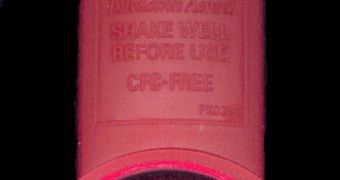More and more children in developed countries throughout the world are beginning to exhibit symptoms of asthma on account of high amounts of indoor particulate matter pollution, a factor that has received very little attention from health experts over the years. Now, a new study carried out on children in Baltimore, Maryland, and published in the February 2009 issue of the journal Environmental Health Perspectives, ties indoor pollution and asthma together.
Indoor particles come in various shapes and sizes, and are most often a mixture between solid ones and liquid droplets. They can be generated by common household activities, such as cooking and dusting, and are so dangerous because they are very, very small.
This allows them to penetrate deep within a person's respiratory system and accumulate in the lungs and throughout the respiratory tract. They are also one of the triggering factors of asthma, a serious respiratory system affection.
“We found that substantial increases in asthma symptoms were associated both with higher indoor concentrations of fine particles and with higher indoor concentrations of coarse particles,” the lead author of the new study, Meredith C. McCormack, MD, MHS, who is also a Johns Hopkins School of Medicine instructor, explains. The investigation followed 150 children in Baltimore for 6 months, with air quality measurements recorded three times – at the beginning of the study, 3 months later, and, again, at the end of it.
The alarming results show that for every increase of 10 micrograms per cubic meter of air (ug/m3) in the amount of particles in the children's bedrooms there was a 6 percent increase in their chances of their developing the disease. This means that higher increases could lead to a very important probability of asthma setting in, which is a pain to get rid of and can cause severe complications.
“Children spend nearly 80 percent of their time indoors, which makes understanding the effects of indoor air very important,” one of the co-authors of the new research, School of Medicine associate professor Gregory B. Diette, MD, who is a co-director of the Center for Childhood Asthma in the Urban Environment, adds.
“Improving indoor air quality and lowering indoor PM concentrations may provide additional means of improving asthma health, especially for children living in inner cities,” another co-author from the Johns Hopkins Bloomberg School of Public Health, professor Patrick Breysse, PhD, who is also a co-director of the Center for Childhood Asthma in the Urban Environment, concludes.

 14 DAY TRIAL //
14 DAY TRIAL //